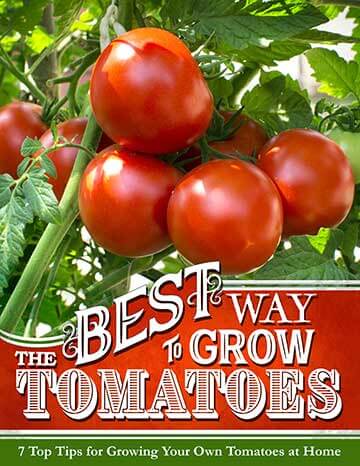
If spring weather has you feeling excited about fresh herbs and produce from your backyard, you might want to try keyhole gardening. Even aspiring green thumbs can easily master this sustainable and rewarding approach to planting. The unique raised bed design integrates composting and a simple, rounded layout for easy access. Here’s everything you need to know to get started.
Discover 7 top tips for growing, harvesting, and enjoying tomatoes from your home garden—when you access the FREE guide The Best Way to Grow Tomatoes, right now!
What Is a Keyhole Garden?
A keyhole garden is a raised circular bed with an indentation in the centre — the keyhole. The middle opening allows greater access to every area of your raised plantings. It’s also where you put a central composting basket filled with food scraps and yard waste.
Gardeners water their keyhole gardens through the compost basket, steadily releasing water into plants’ roots. This allows essential nutrients from the compost to directly access the roots for optimal plant health.
The method is eco-friendly since it reduces the need for synthetic fertilizers and excessive water. It’s also an ideal design for those with small yards or patios, anyone with limited mobility or people who live in arid climates.
Building a Keyhole Garden in Your Backyard
Location is key when building a keyhole garden. You’ll want to choose a sunny area in your yard, but also ensure it’s close to your home’s entrance so you can easily transport food scraps for composting.
Your raised bed should be 6 feet across or less, with enough room to fit in the centre. Mark your keyhole garden using a tape measure and twine. Then, place a stake where the compost basket will go and measure 3 feet out, marking each point until you have a rounded wedge. Sprinkling sand on the ground can help you see your curved area.
Remember to mark your access point before building the side walls. Many opt for concrete blocks, bricks, stones and logs at whatever height feels most comfortable. Likewise, the composting basket should allow water to seep through. Your best option is to use hardware cloth and chicken wire to hold everything together.
Fill the raised bed with a quality soil and compost mixture for optimal plant growth, and place rocks or stones at the bottom for improved drainage. Finally, layer soil, plant matter, biodegradable items and manure in the bin to create nutrient-rich dirt before adding your desired plants.
4 Beginner Tips for Successful Keyhole Gardening
Although keyhole gardening is a great option for beginners, there are a few things to remember. These four helpful tips will help you achieve a thriving raised garden filled with flowers, herbs and fresh produce.
-
Ensure Access Around the Entire Bed
One of the purposes of a keyhole garden is to access all the plants without reaching far. This means you should fit comfortably in the keyhole part and be able to move around easily.
Likewise, you want to ensure you plant your garden effectively, placing taller plants in the back and shorter ones in the front. Be mindful of how certain plants sprawl, too. You don’t want to fight a jungle whenever you tend your garden.
-
Protect the Soil With Mulch Cover
If you build your raised keyhole garden wisely, it’ll have excellent drainage. However, well-drained soil might also increase the chances of drying out in hot, dry or frigid weather. A layer of fine mulch will help retain moisture and eventually turn into organic matter for your soil.
Mulch will also prevent weeds from growing. Suppressing weeds prevents bugs, improves garden aesthetics, supports yard maintenance and regulates soil temperature.
-
Remember Companion Planting Principles
Like conventional gardening practices, companion planting greatly benefits keyhole growth. Companion planting is growing two complementary crops next to each other, helping to maximize space, improve soil health, deter pests and disease naturally and produce greater yields.
For example, basil repels thrips from tomatoes, while garlic repels aphids from just about any plant. Nasturtium flowers will also keep caterpillars away from broccoli, cabbage and kale. Conversely, herbs like rosemary and thyme attract beneficial insects to your keyhole garden.
-
Feed and Turn Your Compost Bin
You must regularly feed and turn your compost bin for the most nutrient-dense soil. Ensure it receives enough oxygen by adding straw, shredded leaves and wood chips for less compaction and greater airflow.
How often you turn your compost depends on what you’re trying to achieve. For instance, you should turn it each week or every few days to produce compost more quickly or occasionally for the most nutrients.
Create the Ultimate Keyhole Garden in a Few Easy Steps
Setting up your keyhole garden is straightforward and offers a great way for beginners to learn how to grow and maintain beautiful flowers and produce. It’s also an eco-friendly alternative to conventional gardens, ensuring ample nutrients and fewer pests and diseases for optimal growth.
Discover 7 top tips for growing, harvesting, and enjoying tomatoes from your home garden—when you access the FREE guide The Best Way to Grow Tomatoes, right now!




